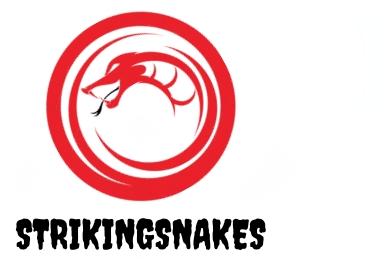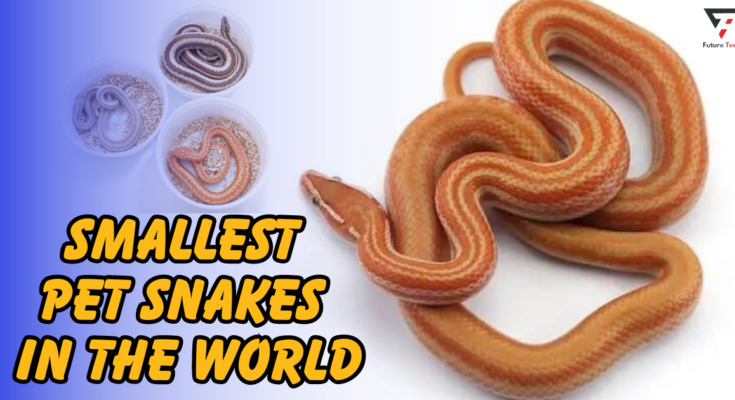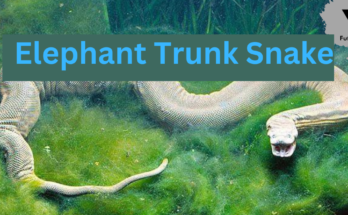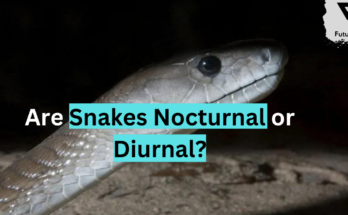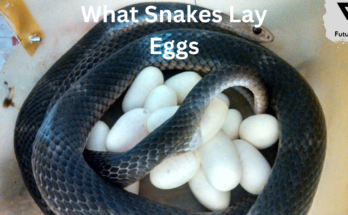Little pet snakes are intriguing animals that provide a unique alternative to more conventional pets. Greetings from the realm of little pet snakes. These little serpents, somewhat less frequent, have unique characteristics and need little maintenance. This article will examine eight distinct kinds of little pet snakes, each with unique traits. These tiny buddies might be a great addition to your house, regardless of your level of expertise with snake care. Choosing a little pet snake might be wise due to many factors, such as its manageable size and low maintenance costs. Let’s now investigate the fantastic world of these reptiles and discover the advantages of owning a little pet snake.
1. captive-bred snake
Measurements: 14 inches to three feet (bigger in females)
Accessible: The typical temperament is docile. Plays a harmless game of bluffing.
Feeding Reaction: Outstanding
These snakes have an unusual look due to their thick body and twisted snout, but they also exhibit peculiar behavior. When challenged, these creatures show excellent bluffing techniques; as a last resort, they may even pretend to be dead while hissing and flattening their bodies.
However, because of their laid-back disposition, captive-bred snakes hardly ever need to put on these protective displays. Hog nose snakes are also well known for not biting; instead, they deliberately imitate striking by shutting their lips in response to perceived threats.
In self-defense, these snakes could also release an offensive scent. You can easily maintain these snakes and house them in a small, cost-effective habitat, such as a 20-gallon tank or plastic bin; however, you must provide additional lighting.
2. Antares children, or children’s python
Dimensions: 30–36 inches; the standard distance is 2.5 feet
Accessible: Frequently from snake charmers.
Adult temperament: serene. Babies were a little more aggressive.
Moderate feeding response. It would help if you fed trained mice to adult snakes. In search of a “mini python”? Without a doubt, this species is for you. The Children’s python, so named because of a person rather than because it is a good snake for kids, is tiny for a snake and is relatively easy to maintain and breed. It may grow to a maximum length of 40 inches (three feet and four inches).
3. Dasypeltis, an African snake that eats eggs
Size: 12–18 inches for men and 24–40 inches for women
The availability is somewhat rare. Most likely, breeder websites and internet classifieds are the only places to find them.
Temperament: very manageable. Absence of front teeth
Response to feeding: specialized feeder. Slow reaction to feeding.
As their name implies, African egg-eating snakes consume eggs and don’t need whole prey animals. The main drawback is that you will want a dependable source of extra tiny, fertilized quail or finch eggs. You can find these eggs online, at Asian food shops, and sometimes from bird breeders. However, it’s important to note that some of them lack fertilization. Reptilinks.com provides small fertilized eggs, and some of these eggs contain fully developed chicks that require feeding. If you’re using frozen eggs, thaw them in warm water by giving them a gentle shake until you hear “sloshing” within, and then feed them right away. Though they seldom attack, these little snakes with no front teeth are beautiful pets if you can find their food.
4. Sand Boa from Kenya
Length: 20 inches to 2 feet (bigger in females)
Accessible: Typical
Temperament: Flighty temperament; some people have a passive nature.
Generally, exposing juvenile snakes to live food initially would be beneficial. You should purchase an older snake you discover consuming warmed or frozen food. These small boats are excellent if one desires a modest snake in both length and girth. Because they are colored, they fit neatly into a similarly-sized plastic tub or a tank as small as 10 gallons. Given that these snakes like digging, adorning the cage is simple and won’t hinder their ability to escape. Just remember to provide the required substrates. Most Kenyan sand boas are calm animals, although some become terrified quickly and would instead not bite in self-defense. Although bites are possible, if the snake thinks your hand is food, you may handle it cautiously to prevent getting bitten.
5. Milk Snake from Mexico
34 to 48 inches long.
Availability: Quite prevalent
While many have a peaceful temperament, some may be fliers and bite. Moderate feeding response. Please speak with the vendor to ensure they are getting enough food because some are quite fussy people. Many people keep milk snakes in captivity because of their eye-catching color and laid-back personality. They continue to be modest as well. Even while milk snakes often grow four feet long, they have a very modest girth and don’t look very big, making them an excellent choice if you want a “larger, small” snake. The following milk snakes, which you can acquire as more mature and well-established feeders, are popular and easy to maintain in captivity:
- Milk snake from Sinaloa
- Nelson’s porcupine
- Snake of Pueblan milk
6. Rose-Boa snake
Dimensions: 24–36 inches, sometimes as high as four feet.
Accessible: Frequently through internet retailers, reptile exhibits, and snake dealers.
Docile temperament.
Excellent feeding response. A brumation period may be necessary for particular fussy eaters to get the most excellent feeding response.
One of the lesser reptiles you may own are these snakes with thicker bodies. Depending on their size, you can even house some of them in tanks as small as 10 gallons, although the standard guideline is 15 gallons or more. This species is relatively little for a snake; it will not grow more than three feet. With the possible exception of keeping their temperatures stable, they require little maintenance. Some owners give them a period of cremation to improve their snakes’ health and eating habits. If your rosy boa is refusing food, the following procedures may assist in fixing the issue:
7. Copperheads
About four feet in length. Some people are five feet tall.
Availability: Quite widespread.
Very placid temperament. Very young snakes can be fliers.
Feeding Response: Older snakes—not tiny babies—generally have a superb feeding response. In terms of size, corn snakes have a good mix of huge and little. They are not “teeny” snakes, but they are a manageable size for novices who would like a snake large enough to handle in both hands. Although some species are more significant than others, they will appear shorter overall due to their thin bodies. People frequently recommend corn snakes as the ideal species for individuals new to raising snakes. For those looking for a low-maintenance, colorful, and easy-going snake, corn snakes have a lot to offer. Make sure the animal is a readily available captive-bred one.
8. Types of King snakes
Size: Approximately four feet, varying according to the species.
Availability: Depending on the species, it is commonplace.Temperament: Usually calm and well-mannered. Differs across people and species. Excellent feed response. Certain species will take non-whole prey, such as reptiles, eggs, and chunks of flesh. Kingsnakes come in a wide variety of species and sizes. Although it is one of the tiniest snakes in the hobby of reptile keeping, the scarlet kingsnake is not for novices. The California kingsnake is the most well-known species of kingsnake. The grey-banded kingsnake, another exquisite species that reaches a maximum length of three feet, is about the same length as the striking jet-black Mexican black king snake.
Why Getting a Small Pet Snake Could Be a Good Idea
Affordable Maintenance
Even though the price of pet snakes varies according to the species, purchasing the tiniest of them all might cost you a fortune. One thing is for sure, though: you won’t have to pay the additional costs of the enclosure, décor, and heating components. You’ll also save money on food because little snakes consume less than giant snakes.
Zero Dangers of Injury
You have to remember that every animal with teeth and a mouth is capable of harm. Small snakes, however, are often calm and unable to cause much damage. There’s never any risk of injury from the snakes because they are too big to strangle humans or other animals.
Furthermore, handling little snakes will prevent you from straining your muscles as managing a giant serpent would.
Absent Allergies
Snakes don’t shed, unlike other pets, so you won’t have to worry about excessive cleaning or sneezing episodes. Because they are simple to clean up after, these reptiles also have no odor.
Additionally, they seldom urinate or exclusively in locations intended for that purpose.
Conclusion
The cutest pet snakes are visually pleasing and need little upkeep. They are inexpensive, low care, and less likely to injure others because of their laid-back disposition, controllable size, and absence of allergies. The fascinating and hassle-free ownership of these fascinating reptiles is an excellent choice for enthusiasts who want to explore with snakes as pets.
